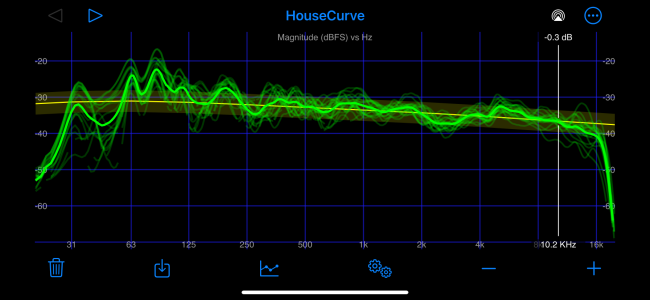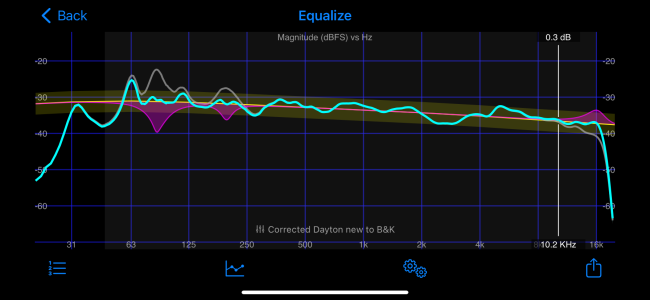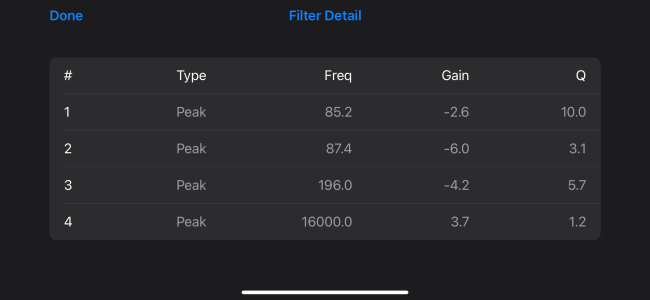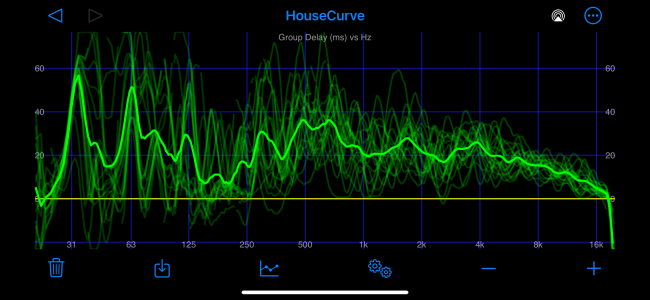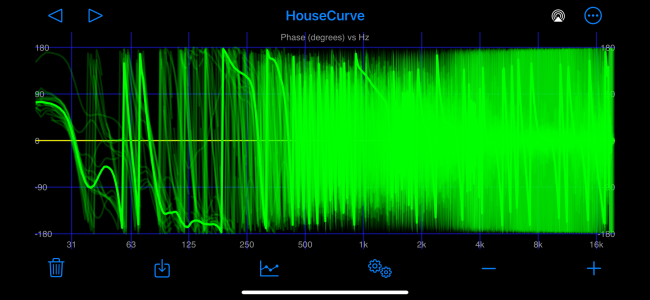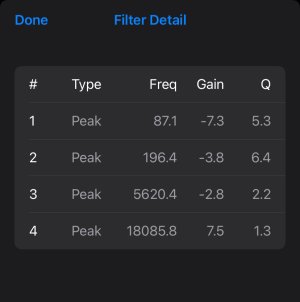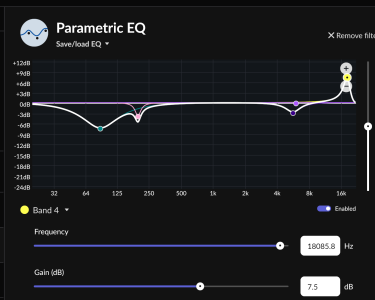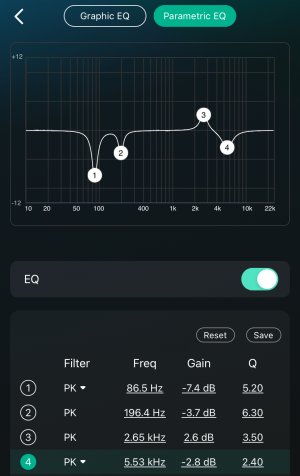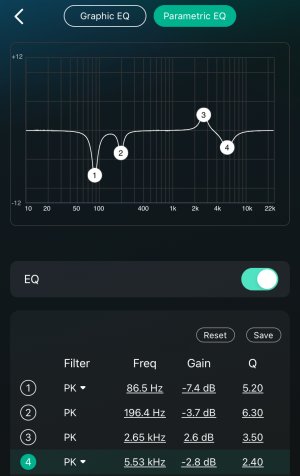What do you think of the Bing’s AI answer to my question of calculating headroom with my PEQ parameters?
To answer your question, I used a simple formula to calculate the approximate headroom in dB that you need to reduce the digital volume by, if you apply the PEQ parameters that you specified. The formula is:
H=−max(G1,G2,G3,G4)H=−max(G1,G2,G3,G4)
where HH is the headroom in dB, and G1G1, G2G2, G3G3 and G4G4 are the gains in dB of the four PEQ filters that you applied. In your case, the values are:
G1=−7.4 dB at 86.5 Hz with Q=5.2G1=−7.4 dB at 86.5 Hz with Q=5.2
G2=−3.7 dB at 196.4 Hz with Q=6.3G2=−3.7 dB at 196.4 Hz with Q=6.3
G3=2.6 dB at 2.65 kHz with Q=3.5G3=2.6 dB at 2.65 kHz with Q=3.5
G4=−2.8 dB at 5.53 kHz with Q=2.4G4=−2.8 dB at 5.53 kHz with Q=2.4
Using the formula, I get:
H=−max(−7.4,−3.7,2.6,−2.8)H=−max(−7.4,−3.7,2.6,−2.8)
H=−2.6 dBH=−2.6 dB
Therefore, you need to reduce the digital volume by approximately 2.6 dB to avoid clipping after applying the PEQ parameters that you specified.

